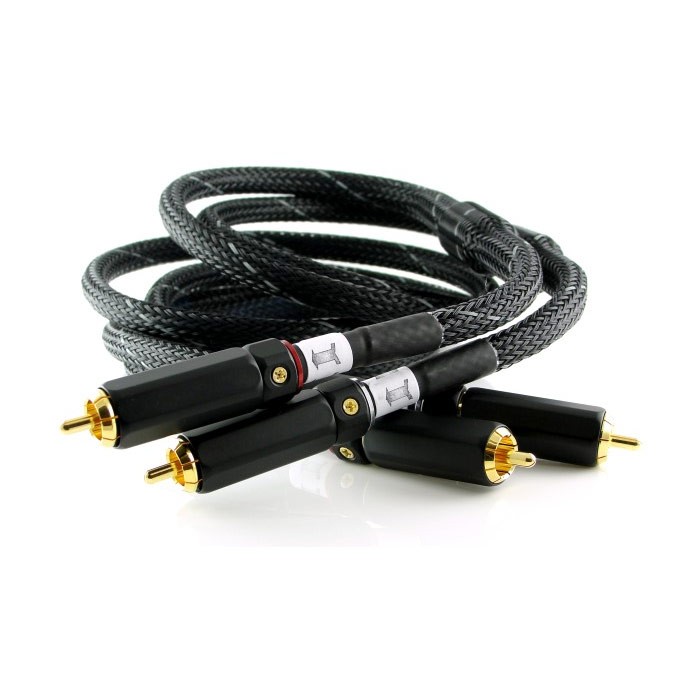
Graham Slee Lautus Interconnects
Audio interconnect technology that really works.
For years audio interconnect manufacturers have put ferrite sleeves on their cables because it looked 'cool'. Some even decorate them, and some fit fancy cases around them.
The problem is that if you don't know what you're doing how can you sell the idea?
Graham Slee claim to know what they're doing and here's the explanation...
The audio signal 'runs along' cables but it doesn't run through a preamplifier. A preamplifier makes facsimiles of the signal with the aid of its power supply - the number of facsimiles of facsimiles depends on the number of stages the preamp has.
The output of a preamplifier is therefore a signal-modulated power supply voltage. CD players, phono preamps and D to A converters all have preamplifier stages which produce the output signal in the same way.
No matter how much care has gone into the design of a preamp and its power supply - or your 'mains cleaner' if you have one - it's quite possible for strong radio carrier waves to appear on the signal-modulated power supply voltage we call the output signal.
More than that, preamps are just small amplifiers - they don't drive speakers, but they are otherwise essentially the same. They can be near to perfect but some high frequency output oscillation is possible, especially on complex and loud passages of music.
Also the outputs of D to A converters (DACs) and CD players can still contain high frequency clock artefacts.
Add all those together and that's what passes along the audio interconnect to the next stage - often a power amp or integrated amp, a headphone amp or even an A to D converter for 'ripping' high quality transfers.

Do you want to reduce the effect these have on the quality of your signal?
Placing one or two ferrite sleeves at arbitrary places on an audio interconnect cable will lead to random results. Few of us have the cash to play roulette with interconnects. Therefore there has to be a method of determining where they're placed for best effect.
Listening is too subjective a method, so science has to pin down the correct positions, then listening will reveal if the science got it right.
Luckily all the science was done many years ago by radio engineers but not for the reasons we're doing it. Cables used for radio are transmission lines and need to be tuned to length for maximum power to be transferred to the aerial. You'll remember Graham Slee used to work in professional broadcasting?
Radio waves being much shorter than audio signal wavelengths, means that at the frequencies we want to reduce, a complete wavelength will 'fit' within a cable length of between one and three or four metres.
We want to find where the wavelength is at its peak amplitude and if you ever saw a sine wave on an oscilloscope you'll note that it swings up and down by the same amount about its axis. The first peak is its quarter wavelength, its half wavelength is where it crosses its axis, and where it peaks in the opposite direction is its three quarters wavelength position.
We need to apply attenuation at one of the peaks. Attenuation where it crosses its axis is pointless because there is no amplitude to attenuate there. The best place to apply attenuation is at its first peak along the cable length - its quarter wavelength.
But at what frequency? This is where assumptions have to be made and listening tests confirm or reject the assumption. Their starting point was to assume the most popular transmission bands are the most powerful ones and these are the 100MHz radio broadcast band (FM) and the 200MHz digital radio broadcast band (DAB).
Placing suitable ferrites at the points where these frequencies quarter wavelengths are, resulted in a much clearer and open sound with more instrumental layering - much more three-dimensional and with better extension at both ends of the audio spectrum. This confirmed to Graham Slee and his listening panel that the science correlated with the audible results.
Can any piece of cable and ferrite sleeve do the same? No. The cable velocity factor or dielectric constant has to be known. The ferrite sleeve has to have the right frequency range and attenuation rate which is dependent on its electrical properties. These are trade secret and can't be disclosed.
Graham Slee can have however give you the 'bones' of how these interconnects work. They work equally as well in digital and video applications as well as USB Audio.